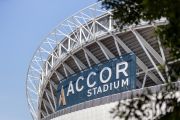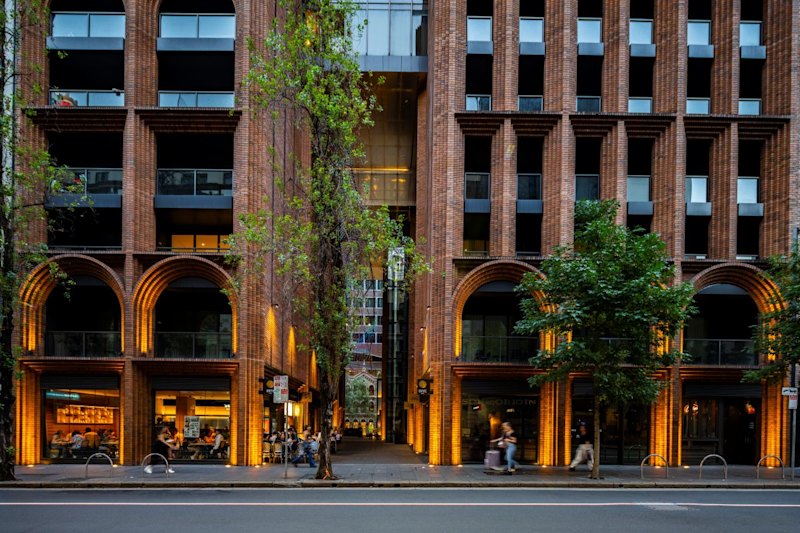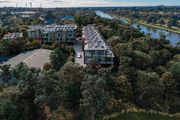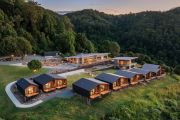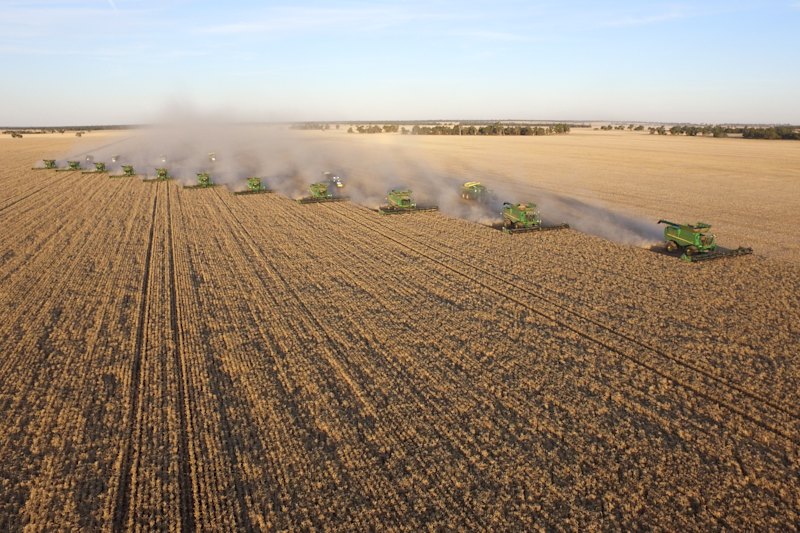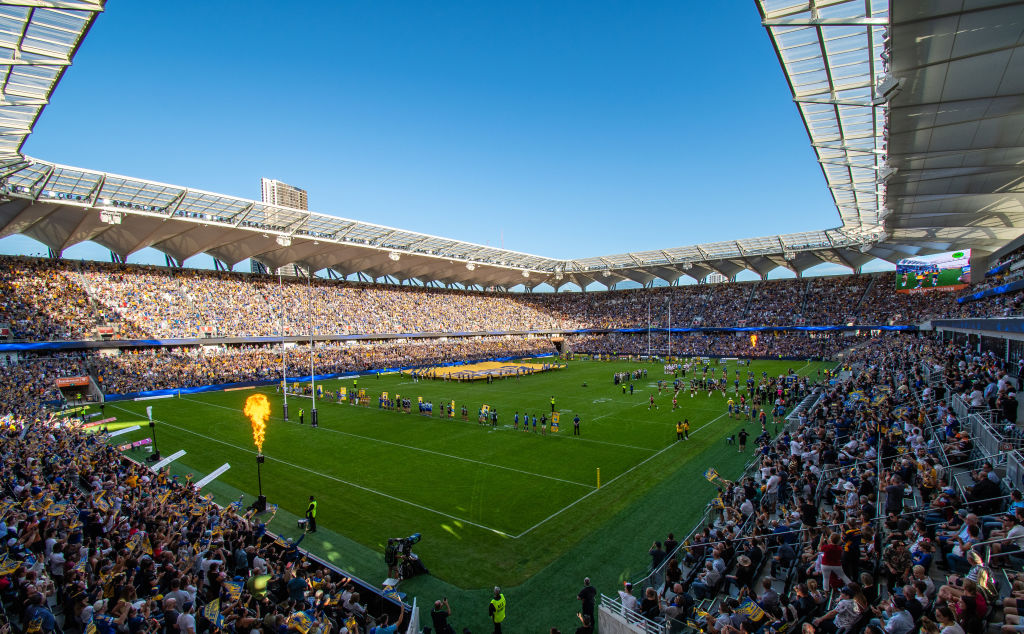
The lifeblood of Australia: Will roaring crowds return to stadiums?
A State of Origin clincher. An AFL final. A Twenty20 grudge match. The 2032 Olympics in Brisbane. Yet another John Farnham farewell show.
Stadiums are the lifeblood of Australia but a cloud descended over them during the COVID-19 pandemic that hasn’t yet completely blown away.
Experts are now asking whether a population that has become used to watching big events on streaming services on high-definition screens in the comfort of home, with beer in the fridge just footsteps away, will ever again return in the same numbers.
“Ultimately, the huge attraction of stadia, is being part of a crowd,” said Mark Sheldon, the Melbourne-based principal of buildings at the Aurecon Group. “If I were going to a stadium and there were three seats either side of me vacant, plus the ones in front and behind me, then I might as well stay at home in front of the TV.
“So, it’s all about being a part of a roaring crowd of thousands of people, while even staying at home watching a sporting event in an empty stadium doesn’t cut it either. Spectators don’t want that, nor the players.”
Sheldon, who worked on Melbourne’s Marvel Stadium in the Docklands and Melbourne Park as well as the Lusail Stadium in Doha – which will host the FIFA World Cup final next year – says there’s a major rethink going on about stadium design and planning. Some of it’s been a result of coronavirus making people more nervous about being in crowds, but mostly it’s a result of needing stadiums to be financially viable, long-term.
Operable roofs, for instance, like at the Marvel Stadium and the replacement roof at the Rod Laver Arena in Melbourne Park, which had taken too long to close previously, mean that events can run much more smoothly without the disruption of rain.
“You need to provide a facility that can be used 300 days of the year rather than 30 days,” he said. “You want a facility that can be multi-use.
“If you have natural turf, an operable roof can help, too, or having openings on the side, as grass needs sunlight to grow. But we’re now seeing some stadia around the world, like Japan’s Sapporo Dome, where if you can’t move their roofs, then they’re moving the grass out to the car park to have light.”
Colleague Garth Rowland, who worked on the new 30,000-seat Bankwest Stadium in Sydney’s Parramatta – now called the CommBank Stadium – the Adelaide Convention Centre and the redevelopment of the Adelaide Oval, has undertaken a research study of stadium operators, designers, event organisers and spectators, to find out how the pandemic might influence stadium design and operation in the future.
From the responses, he discovered the most important factors were accessibility from points of travel, the atmosphere within the stadium, unobstructed spectator views, surrounding family-friendly activities, and other nearby sporting infrastructure.
“We’re now seeing overseas stadia full again but I suspect we’ll need a bit of a mind shift here,” said Rowland. “We’ve seen some little fenced-off pens during the Twenty20 Cricket World Cup but I don’t think that’s the experience most people are looking for; they want to be part of a throbbing mass.
“At the same time, they want to go and feel safe. Stadia operators, long-term, aren’t keen on social distancing, but there might be better crowd control, and using different aisles for bringing people in and taking them out. They’ll also have highly visible sanitation, with balustrades being regularly cleaned, for instance, and good ventilation.”
There may also be vaccination passport checks as crowds enter venues, but most people will become used to these in time, just as they’ve accepted security checks.
Sydney-based Aurecon executive Joe Pirrello has also worked on the Bankwest/CommBank Stadium and is now on the Sydney Football Stadium, currently under construction. He sees the secret of a stadium’s success as good planning so it can be used a maximum number of days per year.
In his opinion, the Parramatta stadium is an excellent model for operational flexibility. “It can operate as a stadium for sport or for live events, and also festivals and large-scale lunches and dinners,” he said. “During the pandemic, they were doing COVID meals for 500 hotel rooms a day.
“So, having that flexibility means it’s no longer just a stadium. We did a tour of stadia of the eastern seaboard and found some where they were only used for 12 home games a year and the rest of the time they were unutilised. But governments are getting better and we’re seeing precincts around them being activated and plenty more opportunities to maximise revenue beyond game days.”
Singapore-based Peter Ayres, managing director of built environment Asia at Aurecon, has worked on stadiums on every continent of the world, and sees COVID-19 as a mere transitory blip in their popularity.
“People love the cauldron of atmosphere and as well they are an important backdrop to global TV events,” he said. “Everyone thought the Tokyo Olympics would be a washout without crowds in the stadia but they still worked well and, with crowds, they continue to give a home team advantage.
“But we’re now seeing a much more tiered offering. I remember 10 years ago designing a stadium in Moscow and being told it was for two groups – the oligarchs who want to sit in a box and the hooligans. There was no one in between. But now we have much more differentiation.”
That might mean standing room for those football fans who want to jump in unison, corporate tiers for those who want a good meal with their match, family spaces and areas for anyone wanting a special experience. At Tottenham Hotspurs’ new stadium in London, for instance, some spectators can stand close to the glass that screen them from the players walking up the passageway onto the ground.
“The best stadia offer something for everyone, according to what they want, and what they are happy to pay,” said Ayres.
